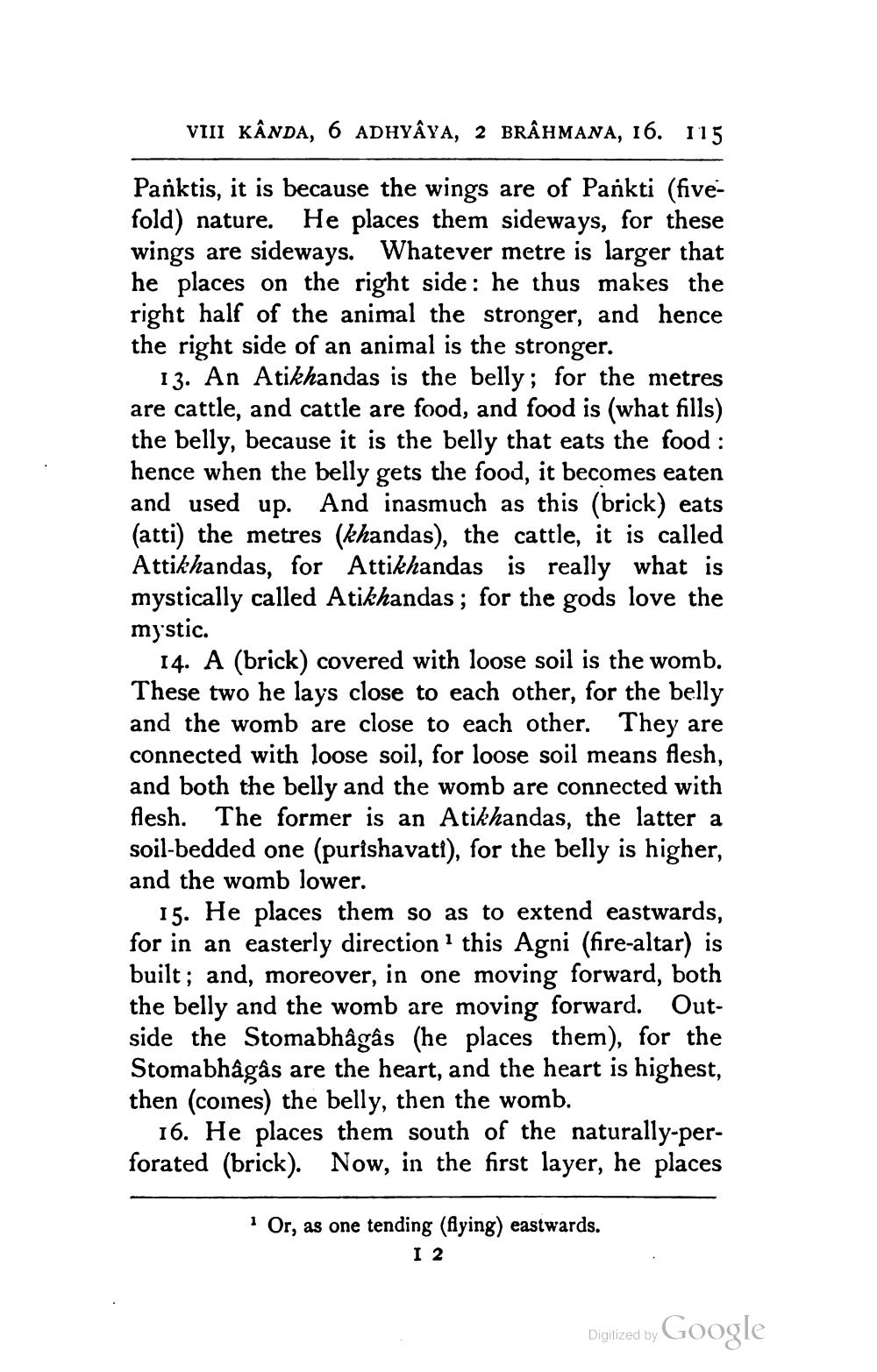________________
VIII KÂNDA, 6 ADHYÂYA, 2 BRÂHMANA, 16. 115
Panktis, it is because the wings are of Pankti (fivefold) nature. He places them sideways, for these wings are sideways. Whatever metre is larger that he places on the right side: he thus makes the right half of the animal the stronger, and hence the right side of an animal is the stronger.
13. An Atikhandas is the belly; for the metres are cattle, and cattle are food, and food is (what fills) the belly, because it is the belly that eats the food : hence when the belly gets the food, it becomes eaten and used up. And inasmuch as this (brick) eats (atti) the metres (khandas), the cattle, it is called Attikhandas, for Attikhandas is really what is mystically called Atikhandas; for the gods love the mystic.
14. A (brick) covered with loose soil is the womb. These two he lays close to each other, for the belly and the womb are close to each other. They are connected with loose soil, for loose soil means flesh, and both the belly and the womb are connected with flesh. The former is an Atikhandas, the latter a soil-bedded one (purishavati), for the belly is higher, and the womb lower.
15. He places them so as to extend eastwards, for in an easterly direction this Agni (fire-altar) is built; and, moreover, in one moving forward, both the belly and the womb are moving forward. Outside the Stomabhâgâs (he places them), for the Stomabhâgâs are the heart, and the heart is highest, then (coines) the belly, then the womb.
16. He places them south of the naturally-perforated (brick). Now, in the first layer, he places
· Or, as one tending (iying) eastwards.
I 2
Digitized by Google




